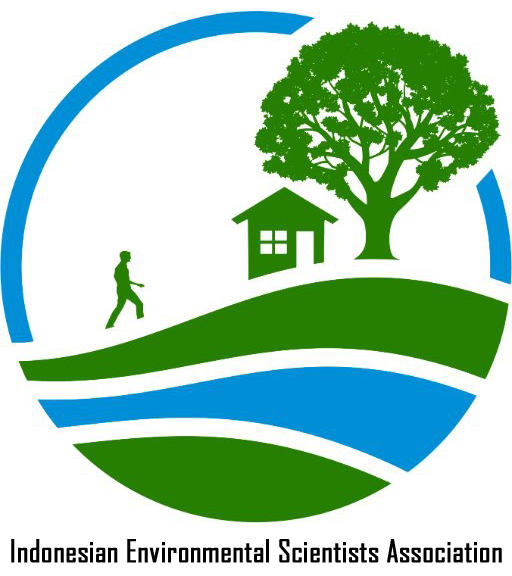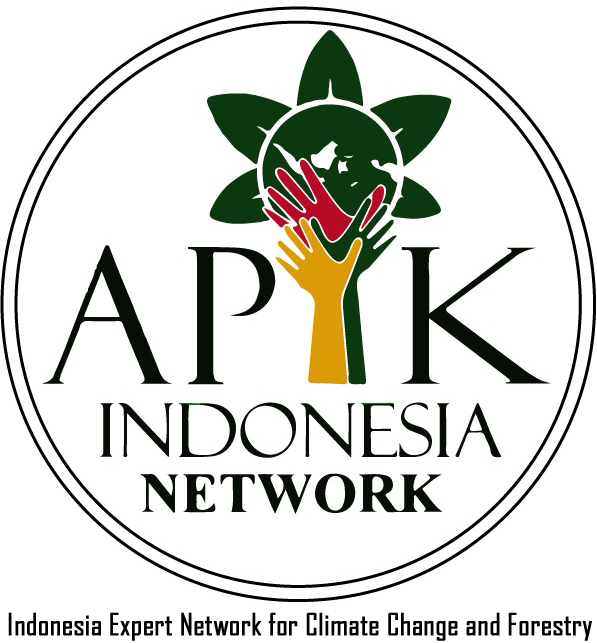A Study of Emission Inventory of CO2e in Manufacturing Printing Company (Case Study: PT. XYZ)
Abstract
As one of Indonesia's printing companies, PT XYZ strives to meet consumer demand by producing as many as they can. They consistently give us large quantities of completed goods each day along with huge emissions and trash. Looking at that situation, it is clear that the industrial process might have an effect on the environment.In light of this, the goal of this study is to determine and estimate the possible effects of emissions from the energy supply on the printing manufacturing process and environmental impact on land based on volatile organic compound materials.The method of measuring the amount of emissions is called emission inventory. ReCiPe 2016 is a method that will use to analyse the impact through manual calculation based on Green House Gases Protocol.Based on the above data it can be concluded that the total emissions produced by PT. XYZ in 2021 and 2022 are 1,616 tons of CO2e and 1,722 tons of CO2e based on electricity purchases paid annually by PT. XYZ. However, calculations from the emission inventory modeling carried out show that the total emissions produced by PT. XYZ in 2021 and 2022 is 1,405 tons of CO2e and 1,389 tons of CO2e.
Keywords
Full Text:
PDFReferences
Lang, K. (2010). 2. Global warming: Heating by the greenhouse effect. Tufts University (Available at https://ase. tufts. edu/cosmos/view_chapter. asp.
Ramphull, M., & Surroop, D. (2017). Greenhouse gas emission factor for the energy sector in Mauritius. Journal of environmental chemical engineering, 5(6), 5994-6000.
Wismandani, Tusiana, and Widjonarko Widjonarko. "Pengaruh Konsumsi Energi Listrik Kawasan Permukiman Terhadap Emisi Karbon Dioksida Kota Semarang” Teknik PWK (Perencanaan Wilayah Kota) 6.4 (2017): 220-231.
Nugroho, A., & Fazzry, B. (2016). Analisis Emisi Gas Rumah Kaca (CO2) Angkutan Antar Kota Dalam Propinsi (AKDP) di Jawa Timur. Prosiding SENIATI, 16-A.
Nugrahayu, Q., Nurjannah, N. K., & Hakim, L. (2017). Estimasi emisi karbondioksida dari sektor permukiman di kota Yogyakarta menggunakan IPCC guidelines. Jurnal Sains & Teknologi Lingkungan, 9(1), 25-36.
Bolin, B., & Doos, B. R. (1989). Greenhouse effect.
Hidup, K. L. (2013). Pedoman teknis penyusunan inventarisasi emisi pencemar udara di perkotaan. Jakarta Asdep Pengendali. Pencemaran Udar. Sumber Berger. Deputi Bid. Pengendali. Pencemaran Lingkung. Kem
Eggleston, H S, Buendia, L, Miwa, K, Ngara, T, & Tanabe, K. 2006 IPCC Guidelines for National Greenhouse Gas Inventories. Japan.
Omae, I. (2006). Aspects of carbon dioxide utilization. Catalysis Today, 115(1-4), 33-52.
Zhou, P., & Wang, M. (2016). Carbon dioxide emissions allocation: A review. Ecological economics, 125, 47-59.
Xu, B., & Lin, B. (2016). Reducing carbon dioxide emissions in China's manufacturing industry: a dynamic vector autoregression approach. Journal of Cleaner Production, 131, 594-606.
Browning, L., & Bailey, K. (2006). Current methodologies and best practices for preparing port emission inventories. ICF Consulting report to Environmental Protection Agency.
Lončarević, Š., Ilinčić, P., Šagi, G., & Lulić, Z. (2022). Problems and directions in creating a national non-road mobile machinery emission inventory: a critical review. Sustainability, 14(6), 3471.
Bernstein, L., Bosch, P., Canziani, O., Chen, Z., Christ, R., & Riahi, K. (2008). IPCC, 2007: climate change 2007: synJournal report.
Menteri ESDM
Indonesia, P. R. (1999). Peraturan Pemerintah No. 41 Tahun 1999 Tentang: Pengendalian Pencemaran Udara. Lembaran Negara RI Tahun, 86.
Fatimah, S. (2019). Pengantar transportasi. Myria Publisher.
Mamduhan, B. H., Huboyo, H. S., & Sutrisno, E. (2015). Studi Beban Emisi Pencemar Gas Rumah Kaca Dari Sektor Industri, Sektor Rumah Tangga, Dan Sektor Sampah Di Kota Semarang (Doctoral dissertation, Diponegoro University)
EPA. 2017. Understanding Global Warming Potentials
Bappenas/GIZ, Kerangka NAMA Indonesia, 2011
Kementrian Energi Sumber Daya dan Mineral. (2013). Kajian Inventarisasi Emisi Gas Rumah Kaca Sektor Energi. Jakarta: Pusat Data dan Teknologi Informasi ESDM
Dewi, A. E., Maryono, M., & Warsito, B. (2019). Implementasi Program Kampung Iklim Di Kota Surakarta. In Proceeding Biology Education Conference: Biology, Science, Enviromental, and Learning (Vol. 16, No. 1, pp. 221-228).
Environmental Protection Agency, Direct Emissions from Stationary Combustion Sources, GreenhouseGas Inventory Guidance. January 2016
EPA Center for Corporate Climate Leadership: Greenhouse Gas Inventory Guidance Direct Fugitive Emissions from Refrigeration, Air Conditioning, Fire Suppression, and Industrial Gases
Kainou, K (2005). ‘Revision of default net calorific values, carbon content factors, carbon oxidization factors and carbon dioxide emission factors for various fuels in 2006 IPCC GHG Inventory Guidelines’. RIETI, IAI, Govt of Japan.
Nilsson, K and. Nilsson, M (2004). ‘The climate impact of energy peat utilization in Sweden - the effect of former land use and after-treatment’. Report IVL B1606.
Uppenberg, S. Zetterberg, L. and Åhman, M. (2001). ‘Climate impact from peat utilisation in Sweden’. (2001). Report IVL B1423.
Savolainen, I., Hillebrand, K., Nousiainen, I. and Sinisalo, J. (1994). ‘Greenhouse gas impacts of the use of peat and wood for energy.’ Espoo, Finland’. VTT Research Notes 1559. 65p.+app.
DOI: http://dx.doi.org/10.33021/jenv.v9i2.4747
Copyright (c) 2024 Meigail Endrew Saroba

This work is licensed under a Creative Commons Attribution-ShareAlike 4.0 International License.
Journal of Environmental Engineering and Waste Management Published by PresUniv Press, in collaboration with IESA and APIK Indonesia Network




